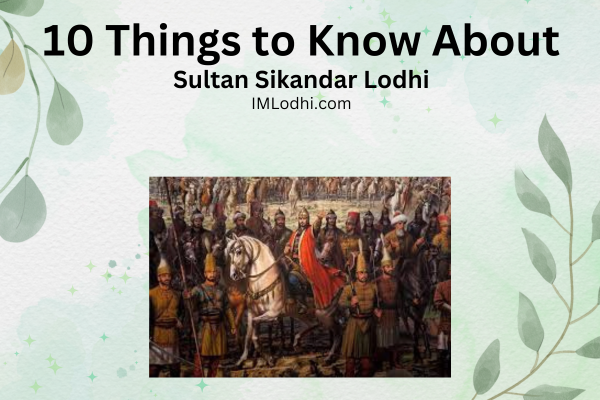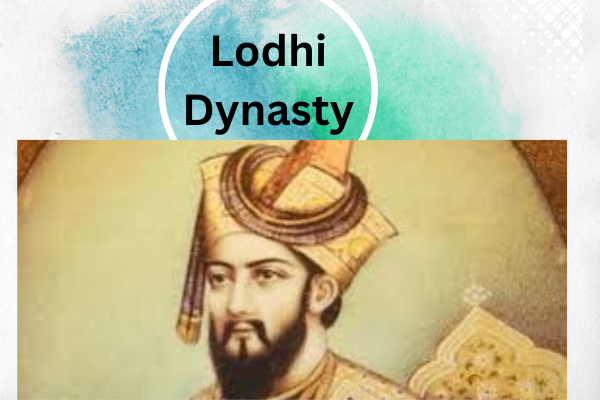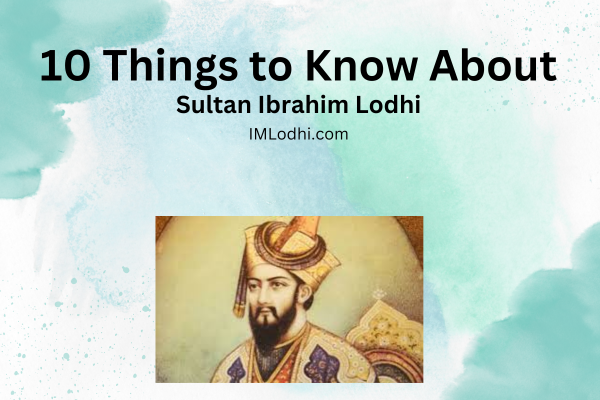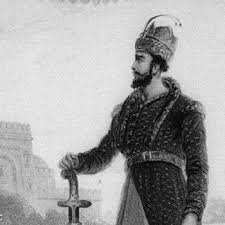10 Things to know About Sultan Sikandar Lodhi
10 things to know about Sultan Sikandar Lodhi

Sikandar Lodhi (1458–1517), also known as Nizam Khan, was the second ruler of the Lodhi dynasty and one of the most notable sultans of the Delhi Sultanate. He ruled from 1489 to 1517 and was known for his administrative reforms, military campaigns, and promotion of cultural and educational institutions. Here are ten key things to know about Sikandar Lodhi:
1. He Was the Second Sultan of the Lodhi Dynasty
- Sikandar Lodhi was the son of Bahlul Lodhi, the founder of the Lodhi dynasty. He succeeded his father as the Sultan of Delhi in 1489 and expanded the Lodhi rule over North India.
2. Expansion of Territory
- Sikandar Lodhi undertook military campaigns to expand his kingdom. He captured important regions such as Bihar, Jaunpur, and Bengal, consolidating Lodhi control over northern India. He is particularly known for his successful conquest of Jaunpur in 1493, which became an important part of his kingdom.
3. Administrative Reforms
- Sikandar Lodhi was known for his efficient administrative policies. He implemented a system of price control on essential goods to ensure fairness for his subjects. He also worked to improve agricultural productivity and brought in policies to stabilize the economy, such as regularizing taxes and ensuring justice.
4. Cultural Patronage
- A patron of the arts and literature, Sikandar Lodhi encouraged scholars and poets at his court. He supported Persian literature and culture and was an accomplished poet himself, writing poetry under the pen name “Gulrukhi.” His reign was marked by cultural vibrancy, with many poets and scholars flourishing in his court.
5. Promotion of Learning and Education
- Sikandar Lodhi founded schools and institutions that promoted education, especially Islamic learning. He encouraged the establishment of madrassas (Islamic schools) and was keen on promoting both religious and secular studies.
6. Founder of Agra
- Sikandar Lodhi is credited with founding the city of Agra in 1504, which later became the seat of Mughal power and a city of historical significance. He recognized Agra’s strategic importance and built it into a major center of trade and governance.
7. Religious Policies
- Sikandar Lodhi was a devout Muslim and is known for his strong religious policies. He was keen on promoting Islamic orthodoxy and, in some cases, displayed intolerance toward non-Muslim practices. For example, he imposed restrictions on Hindus in certain regions and was known to have destroyed some Hindu temples, including the temple in Nagarkot.
8. Conflict with Rajputs
- Sikandar Lodhi had a strained relationship with the Rajputs, especially with the Mewar kingdom under Rana Sanga. His conflicts with Rajput rulers weakened the Lodhi dynasty’s control over certain territories in Rajasthan.
9. Tomb of Sikandar Lodhi
- Sikandar Lodhi’s tomb, located in Lodhi Gardens in Delhi, is a significant architectural example of the Lodhi style. It reflects the Indo-Islamic architectural trends of the time, with a focus on symmetry and elegant design. The tomb has become a historical landmark in Delhi.
10. Succession and Legacy
- Sikandar Lodhi’s reign is often considered one of the most prosperous and stable periods of the Lodhi dynasty. He was succeeded by his son, Ibrahim Lodhi, whose rule would ultimately lead to the dynasty’s decline. Despite his efforts to strengthen the kingdom, Sikandar Lodhi’s son could not hold the empire together, and it eventually fell to Babur in the Battle of Panipat (1526).
Sikandar Lodhi’s reign is remembered for his contributions to governance, culture, and territorial expansion, as well as his efforts to centralize and stabilize the Sultanate of Delhi.







One Comment